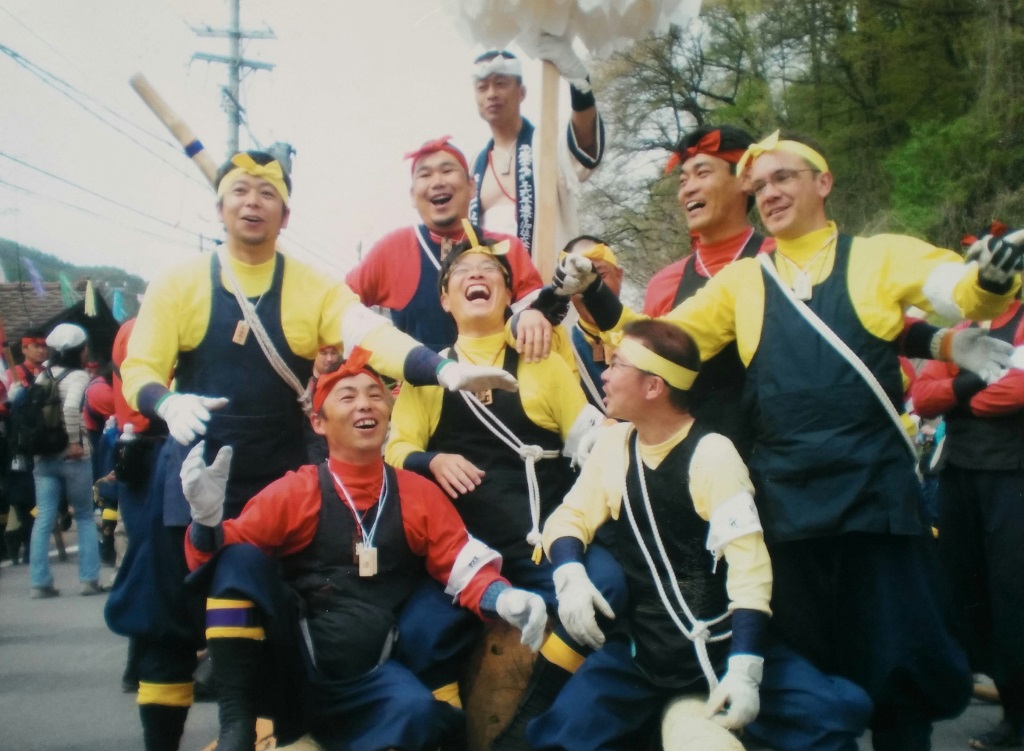FYI:
- The average pillar is 17 meters long, over 1 meter in diameter, and weighs up to 10 tons. (this varies according to the pillar’s placement, with each shrine’s First Pillar being the largest)
- The trees chosen to become hashira are always fir trees (momi ) and are at least 150 years old
- In recent decades finding trees of the proper size has become a problem and points to local environmental issues
- While Onbashira is ancient, kiotoshi (the log riding) is a more recent innovation.
- Shimosha’s kiotoshi slope runs at about 35 degrees for 100 meters
- Depending on the pillar, anywhere from 1000 to 3000 parishioners join in the pulling
- Onbashira happens regardless of the weather. There have been times it’s happened in downpours and driving snow.
- Despite the sometimes wild atmosphere, Onbashira is a dry festival (For the parishioners. Never fear, they make up for it at the end of the day.)
- In the past the replaced pillars were often used as bridge posts. These days they are more likely to find themselves adorning tourist spots, made into amulets or other items for the shrines, or carved into keepsakes for parishioners and visitors.
- A number of taboos are associated with Onbashira, including those discouraging marriage and building new structures during the Onbashira year. These are not widely observed now, and probably once dealt with the community’s limited resources.
- There are several differences between Kamisha’s Onbashira and Shimosha’s. The most obvious is Kamisha’s use of medoteko, the horn like protrusions from the front and rear of the pillar that the parishioners cling to as they are pulled along. Originally, they were just poles used to help maneuver the hashira as they’d easily get stuck in the sandy mountain soil. (Apparently the forest they harvest the trees from for Shimosha is less sandy, so medoteko were never introduced).
- Kamisha and Shimosha have different systems for determining which neighborhood pulls which pillar. For Shimosha the pairing is fixed–so, for example, Minato has pulled the Harumiya 4 pillar since the late 1800s. Kamisha does this by lottery. The neighborhood pulling the Honmiya 1 pillar this year (the largest of the festival) last did so almost 100 years ago.
- While there are other differences between Kamisha and Shimosha, they are largely technical or administrative in nature. While some like to consider these differences significant, in all major ways Onbashira is a single tradition with the exact same roots, symbolism, and ritual function wherever it’s performed.
